In this special edition of my “seasonal eating” post, you’ll see no fruits or vegetables. Because in December “seasonal” equals “cookies”, at least if you live in Germany. In my best attempts to integrate into society, I spent the whole month of December with Luisa Weiss’s Classic German Baking.
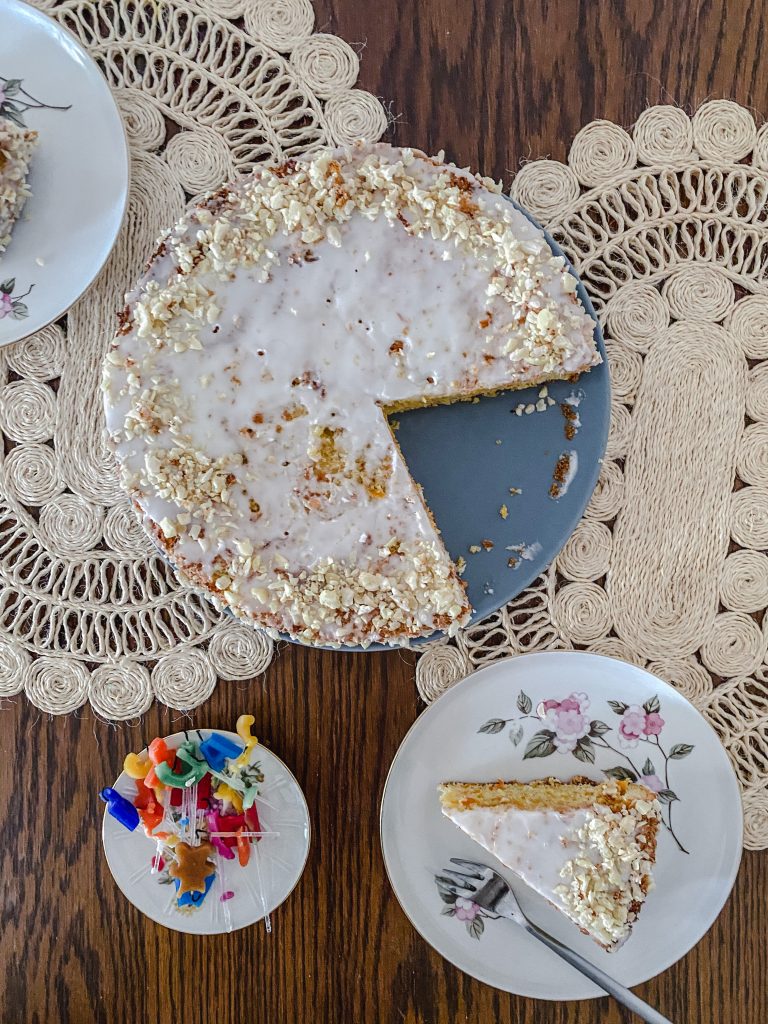
It all started with Rüblikuchen, a German carrot cake that I made for my son’s first birthday. Unlike the American version that is rich, intense, and filled with cream cheese frosting, German carrot cake is light, with no butter in the batter. There’s no buttercream either — simple sugar glaze is all it needs.
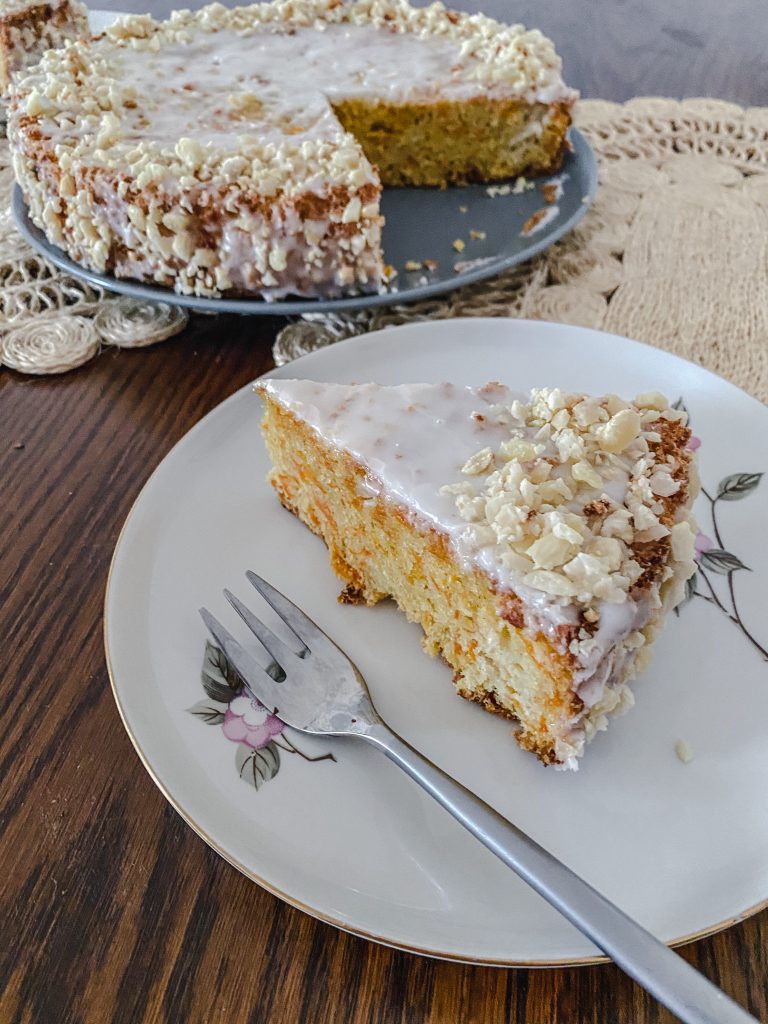
There were supposed to be Rübli (marzipan carrots) as decoration on top of the cake, but at 10.30 pm, when I pulled the springform out of the oven, coloring and shaping marzipan was the last thing I wanted to do.
Baking has become a night-time routine. I manage to make meals while my one-year-old son is holding on to my leg, but baking is supposed to be a thoughtful and calming process, right? So on most days in December I’d put Kroshka to sleep, have a cup of ginger tea, and then start baking.
After the initial success of carrot cake, I moved on to the Christmas chapter of Classic German Baking which features the likes of Stollen, Lebkuchen (gingerbread) and a whole array of German, Austrian, and Swiss festive cookies.
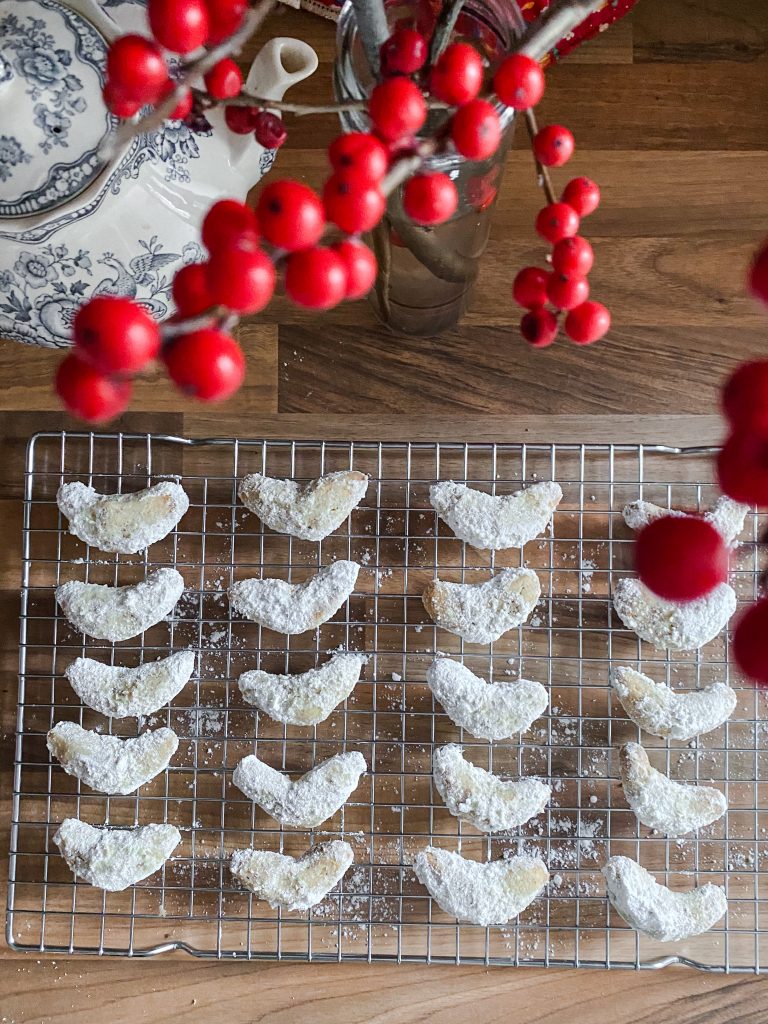
I started holiday baking off with Vanillekipferl, almond vanilla crescent cookies, simply because that was the one cookie I already knew and tasted. I made them for the first time back when I lived in USA. Little did I know then that I would move to their country of origin.
Ok, technically, they are from Austria. But Vanillekipferl are equally popular here, in Germany. This was my favorite German cookie of all until, one day before Christmas, I baked Elisenlebkuchen, but more on that later. Still, being the second favorite cookie is pretty good.

Pffernüsse 
Next up were Pffernüsse, translated as “pepper nuts”. To make them one needs a raising agent called “baker’s ammonia” that I’ve never used before. I went to the supermarket, thinking “ammonia in German must also be ammonia, right?” But it was nowhere to be found. Google Translate suggested I search for Bäckerammoniak, which didn’t help either, because, as it turned out, ammonia in German is Hirschhornsalz. How did I not think of that?
Ammonia is supposed to propel whatever you are baking up. So instead of spreading the cookies turn into domes. One major drawback of using ammonia, though, is the smell. I opened the oven half way to check on the cookies and was almost knocked back by the strongest smell of pee. Once the cookies are baked, the smell completely disappears.
Right out of the oven, Pffernüsse are quite crunchy and are supposed to rest for a few days, which gives them the time to develop rich taste with a hint of white pepper, but, more importantly, turn soft. I can only compare them to Russian pryanik in terms of texture and flavor, but am not sure if you’ve ever tried a pryanik so this is probably not helpful.
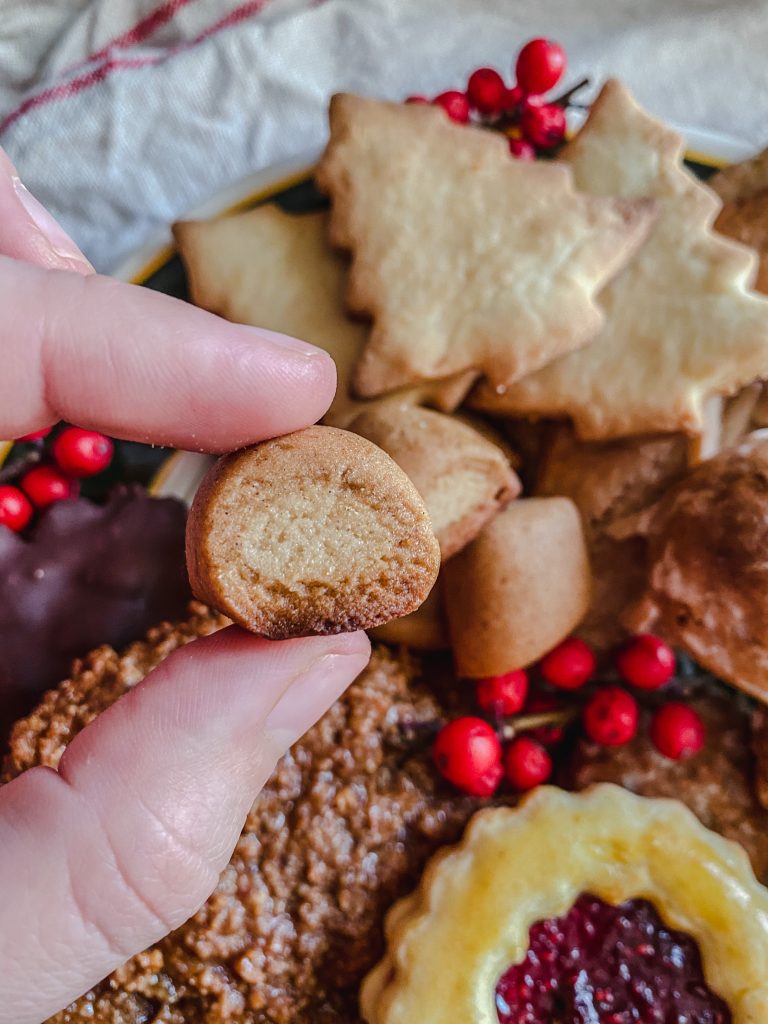
I chose the third cookie solely because it has the funniest, non-German sounding name — Biberle. The cookies look very little like cookies, but more like nuggets of marzipan wrapped in gingerbread dough. Small and chewy, they make for an addictive snack.
Luisa Weiss had a live baking session at Book Larder, where she showed how she makes Biberle in her Berlin kitchen. I watched the recording one night, while making mine. Surprisingly, Kroshka didn’t wake up once during my baking session and I had such a great time, rolling marzipan and listening to German Christmas traditions.

The fourth cookie was Spekulatius, almond spice cookie. The recipe said: “roll the dough out and cut it crosswise into 8 equal strips and lengthwise into 6 strips, yielding 48 cookies”. I had a fleeting thought that a ruler might come in handy, but discarded it as requiring additional work, i.e. walking all the way to the bedroom and back.
I cut the dough, just as directed, crosswise into 6 somewhat equal parts and lengthwise into 4 not at all equal parts, yielding 24 cookies. Never underestimate the power of a ruler when making German cookies. My Spekulatius came out twice bigger than they are supposed to be, but still crunchy.

Then there were Weihnachtsplätzchen, which I am sure if you are not German you didn’t even try to read, let alone say out loud. Weihnachtsplätzchen is translated to “Christmas cookies”. So, technically, you could say that all of the cookies I made in December are Weihnachtsplätzchen, and you wouldn’t be wrong.
But what Luisa Weiss means by Weihnachtsplätzchen is the simplest short dough cookies. Every baker has a recipe for an easy dough that comes together in a matter of minutes. You roll it out, use cookie cutters to make cute forms and voila!

Then, you can sandwich two Weihnachtsplätzchen with raspberry jam and there you have a Spitzbuben. So those were cookies number five and six.
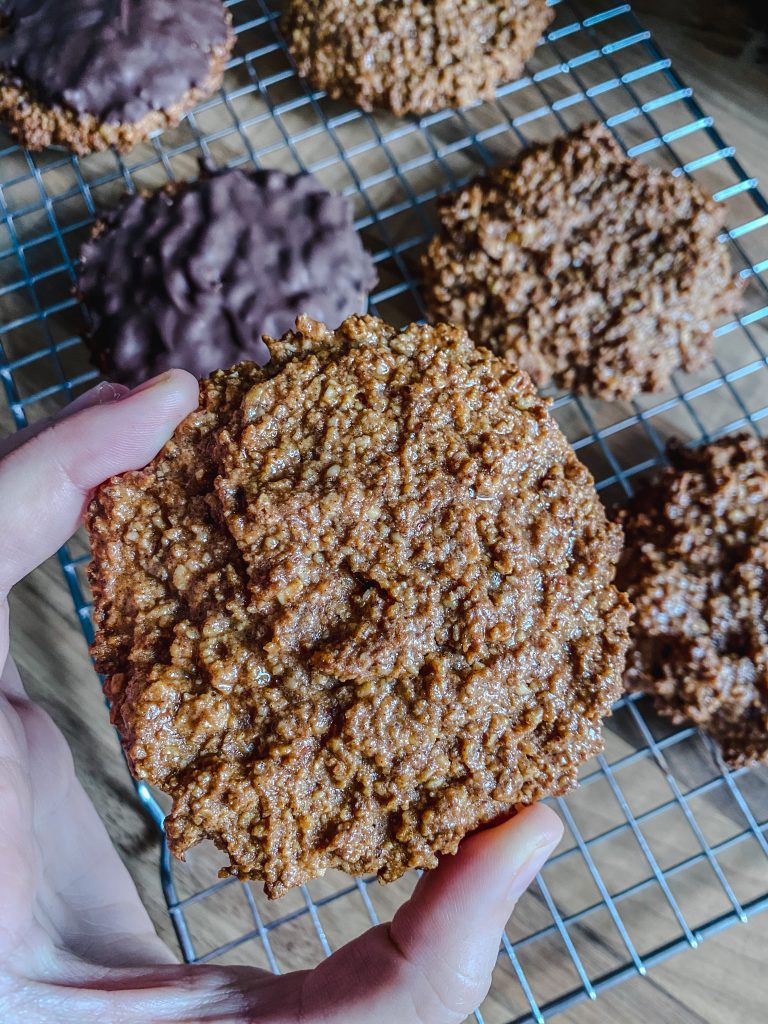
Elisenlebkuchen – front 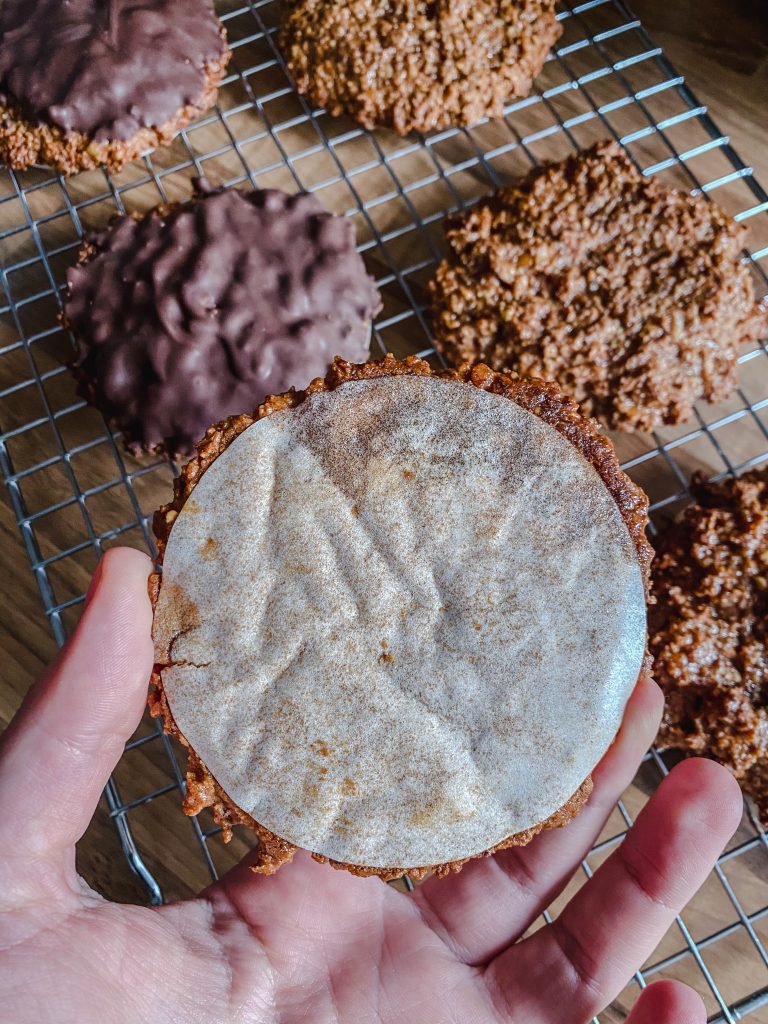
and back
And, finally, the seventh and the last cookie in my 2020 collection was Elisenlebkuchen. I’ve been debating for a while whether to make them myself, since I live in the city where they originated. Every bakery in Nuremberg sells Elisenlebkuchen and there are even specialty stores.
I made up my mind and got all the ingredients just in time for another live bake-along that Luisa Weiss did in December. I went to several different stores to get marzipan, ground hazelnuts and almonds, whole blanched almonds, candied orange and citron, Lebkuchen spice mix, and oblaten, thin wafers on which the cookies are baked. Then I joined a Zoom call only to hear “beat the eggs and sugar together…” The eggs! I forgot to buy the most basic ingredient of them all.
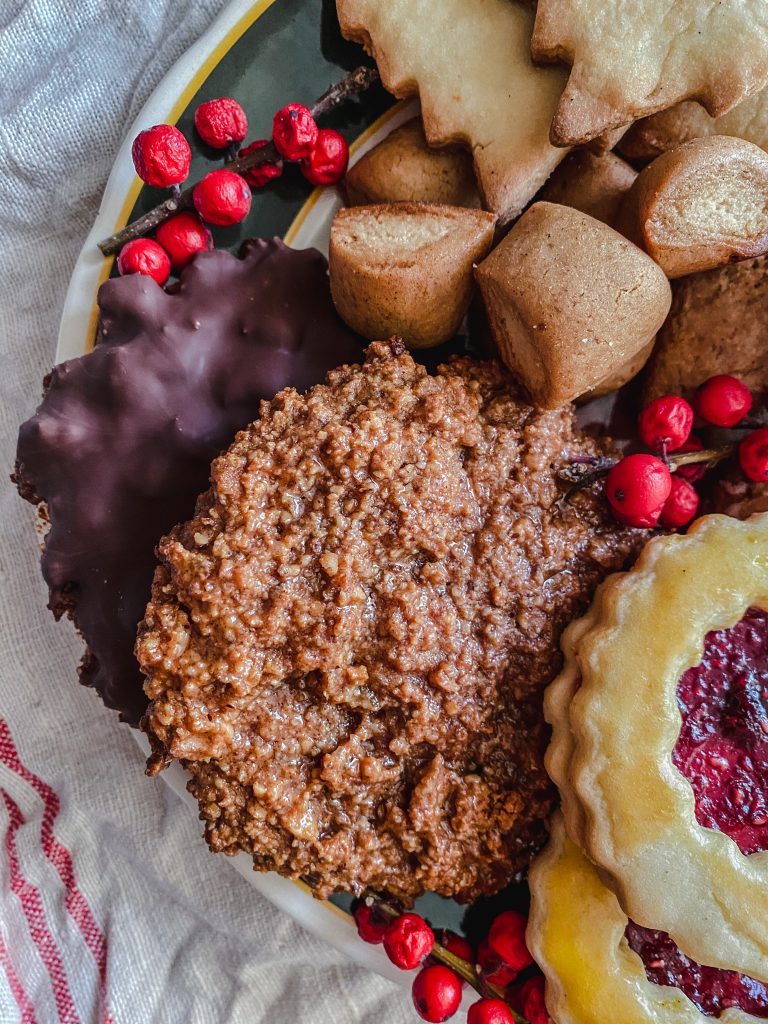
The day before Christmas I got the eggs and made my Elisenlebkuchen while watching a recording of the baking session. Boy, was I not disappointed. I don’t want to say that my Elisenlebkuchen were better than the ones in Nuremberg bakeries… but they kinda were. This is not a testament to my baking skills, but only to Luisa Weiss’s epic recipe.
Then again, at the bakeries you find pre-packed Elisenlebkuchen that were baked days and even weeks ago. This is the kind of cookie that not only lasts for months, but actually gets better and more flavorful with time. However, I prefer mine straight out of the oven.
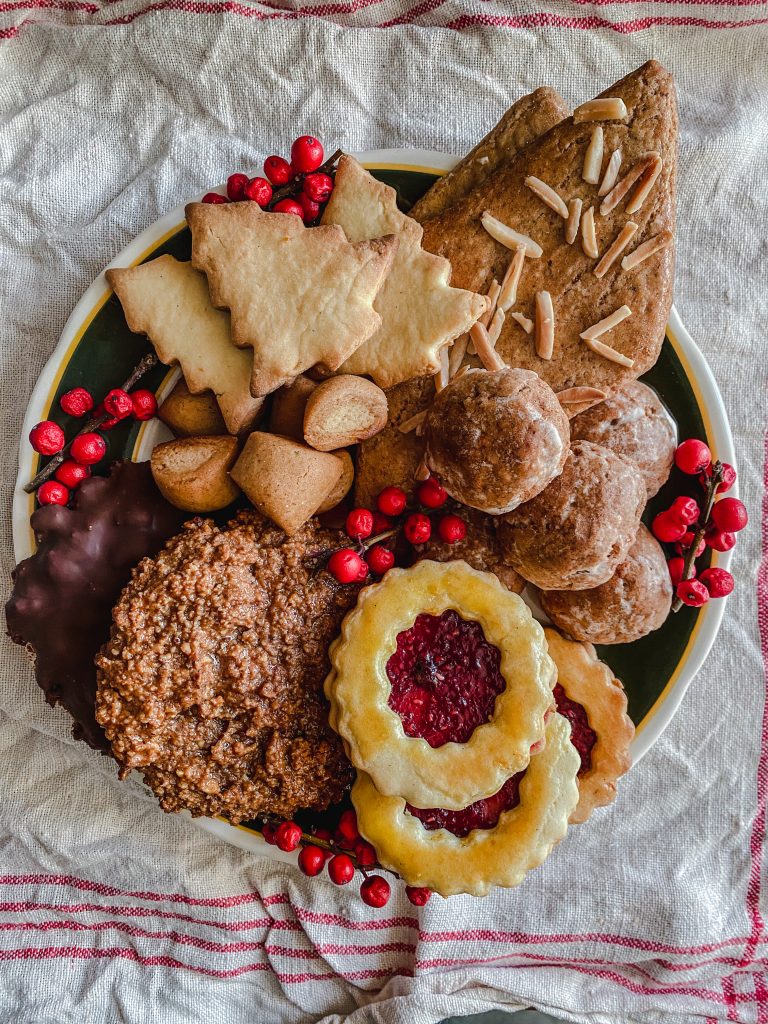
It is a tradition in Germany to bake cookies throughout November and December and then arrange an assortment on a plate. Bunter Teller — a colorful plate — consists of both homemade and store-bought cookies, slices of Stollen, foil-wrapped candy, and mandarins.
Usually, the first time Bunter Teller makes an appearance is on the First Sunday of Advent. Families and friends enjoy the treats along with tea or coffee. We didn’t have anyone over this year — for obvious reasons — but my husband and I did sneak a Biberle or a Spekulatius every time we had coffee, which is often.
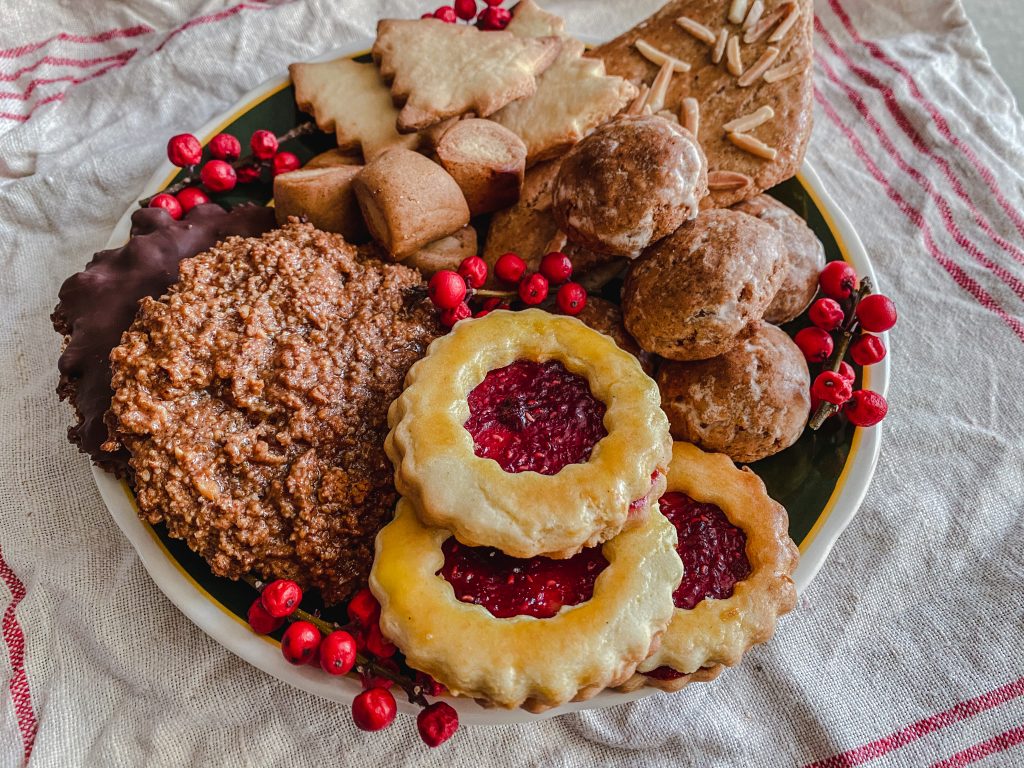
Besides the obvious advantages of baking and eating cookies for a whole month, there was a side effect of learning a lot about German food and culture. I felt so much joy when I was able to identify a dozen different cookies sold at the bakery near my home.
I even sent some of my cookies to friends and family in Germany and abroad — something I’ve never done before. To make things interesting, I added a packet of Lebkuchen spice mix and some apple cider caramels to every package. Oh, the caramels! I found the recipe by accident on Deb Perelman’s Smitten Kitchen, and it is the closest I came to cooking local and seasonal in December: my apple cider was from a local farmer.
You boil a liter of that precious liquid down to about 1/4 of its original volume, add cream, sugar, and salt, and there you have the most intense apple-flavored caramels.
They are really easy and quick to make. The real struggle was wrapping each caramel into baking paper, which took me three times longer than cooking. These caramels were supposed to make my Best Food of 2020 list, but I somehow forgot to include them. Just know, these caramels are mind-blowingly good and I highly recommend you make them.

Finally, on the 31st of December, I’ve decided that I need to finish my baking marathon and 2020 by making just one more thing — Medvezhiy tort, or Bear’s cake in English. Don’t ask me why Bear’s, I’ve no idea, probably because it features two tablespoons of honey among other ingredients.
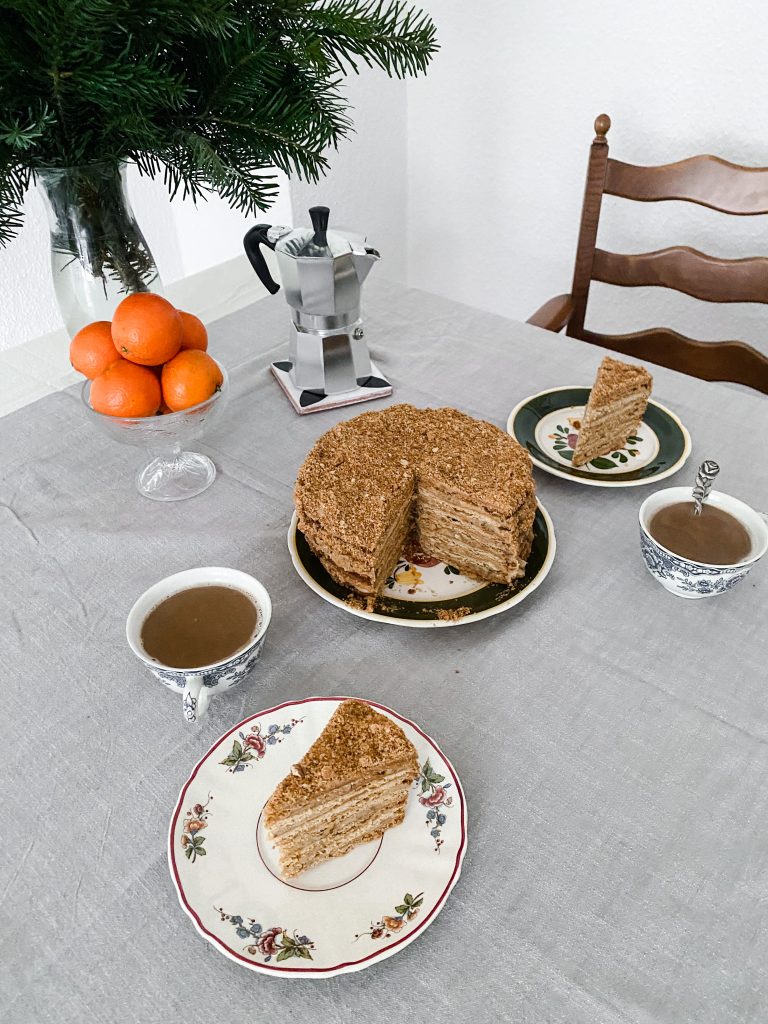
My husband kept saying that I made Russian Honey cake, Medovik, and I kept refuting his arguments.
— But it has many layers?
— Yes.
— And it is covered in cake crumbs?
— Yes.
— And it looks exactly like Medovik?
— Ok, kinda.
— But you are saying it’s not Medovik?
— It’s Bear’s cake!
I mean, ok, maybe, it kinda does look and also somewhat tastes like Medovik, but the recipe says Bear’s cake and my mom, who makes it every New Year for as long as I can remember, calls it Bear’s cake, so just eat your Bear’s cake!
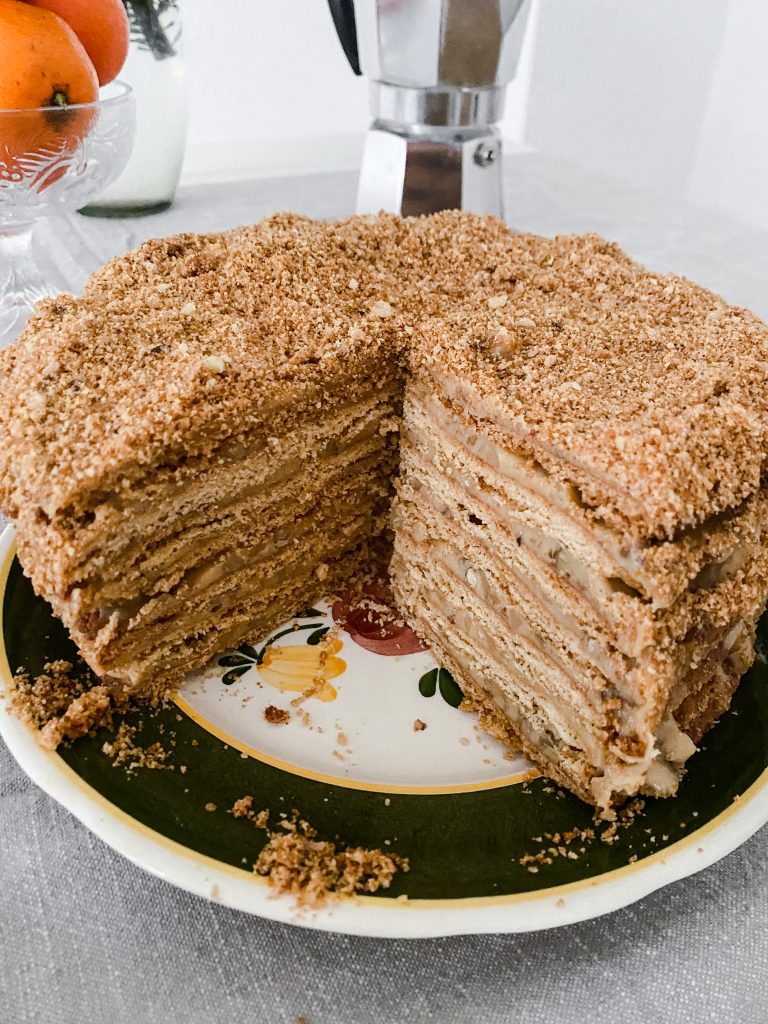
If there was one family recipe in my family, it’s this cake. It has an adorable story behind it, that you can find here, along with the recipe.
So that’s my December. It is common to reflect on the year when it comes to an end, make lists of accomplishments, and plan for the next twelve months. But my “seasonal eating” posts started in May — a consequence of the pandemic and lockdown — too soon to reflect yet.
In January, I will be back to my regular programming with cooking loads of vegetables and trying new ingredients. Meanwhile, if you feel like end of the year round-up kinda post, check out That’s What She Had in 2020 — my favorite foods of the year, with all the recipes linked, so you can make them too.



